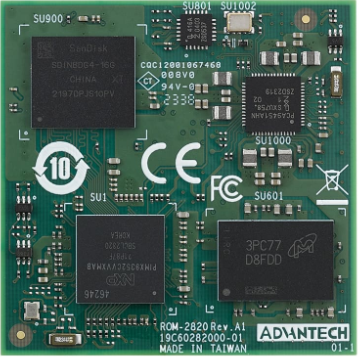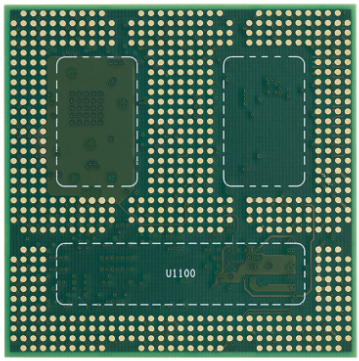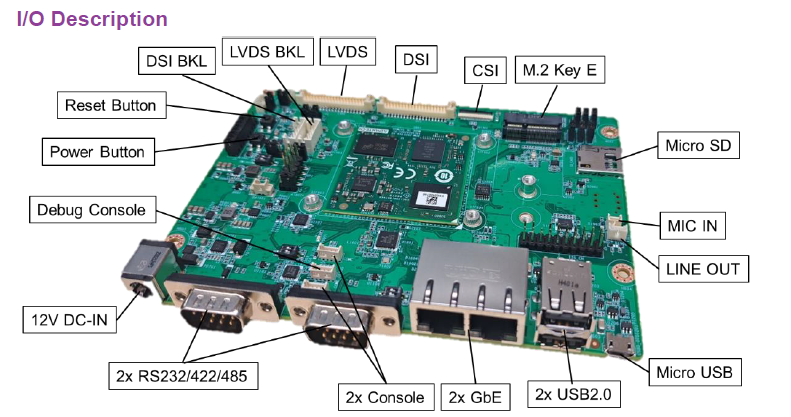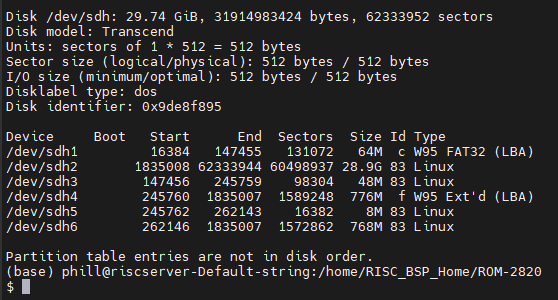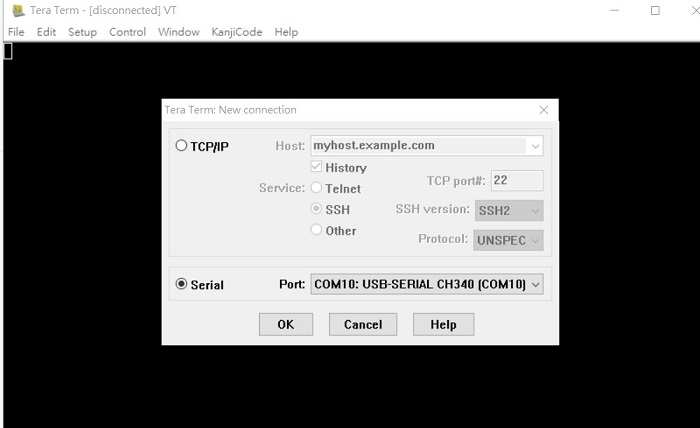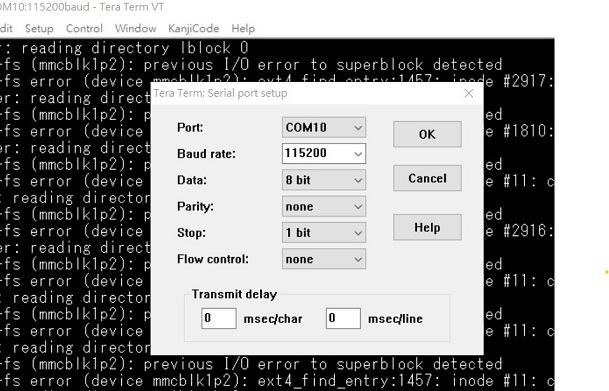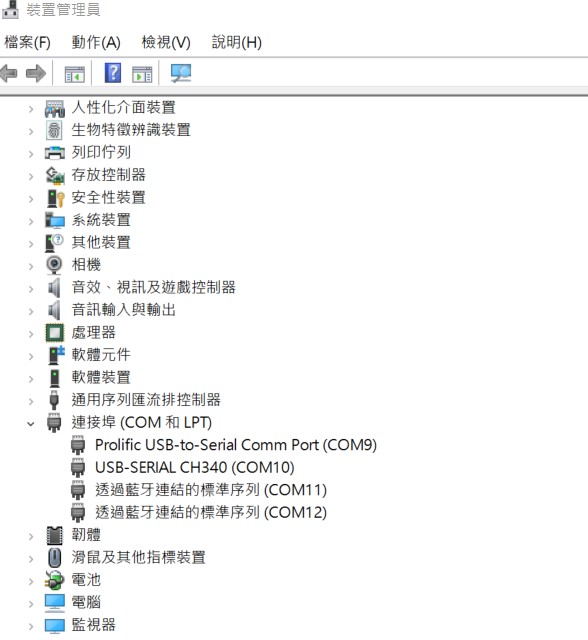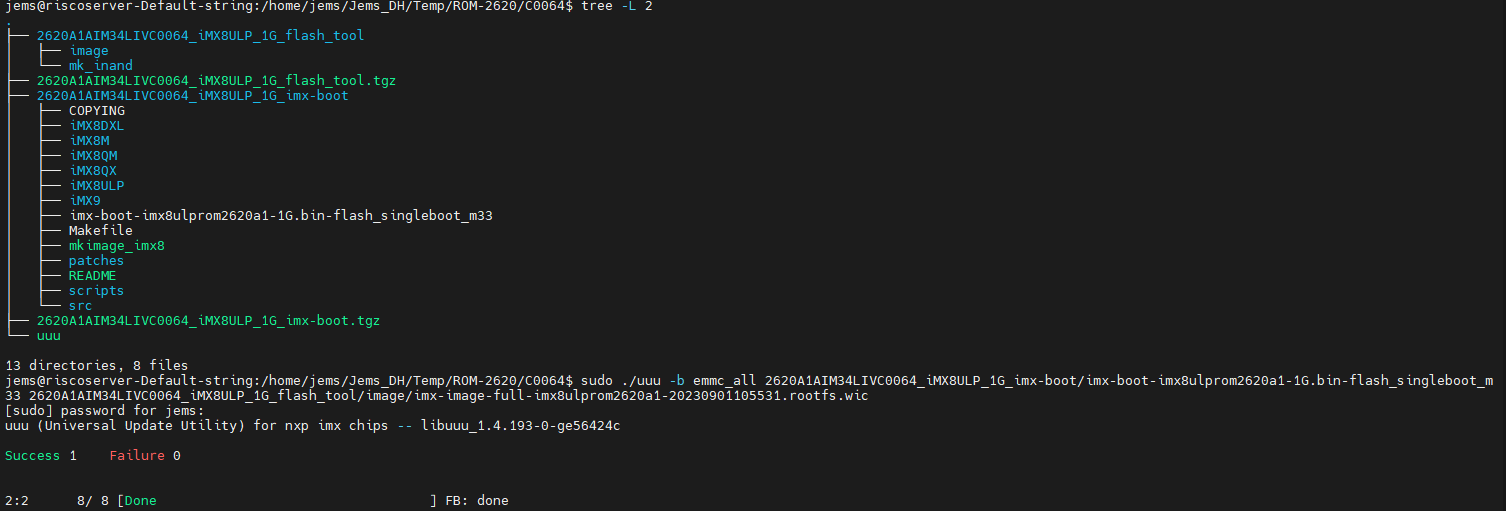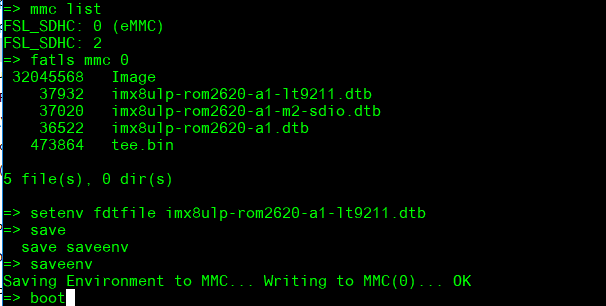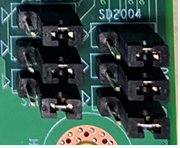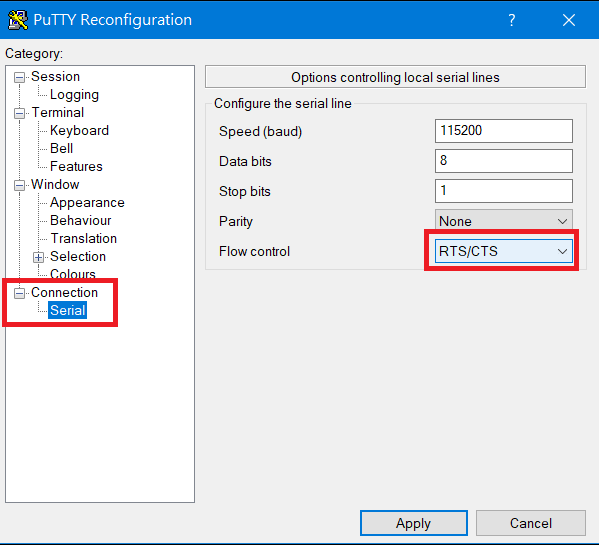ROM-2820 user guide
Contents
- 1 產品介紹
- 2 接口布局和尺寸(Layout and Sizes)
- 3 快速入门 (Quick Start)
- 4 Linux系统的基本使用(Linux System Basic Operating Method)
- 4.1 UUU 使用方法(USB Connection (OTG port))
- 4.2 Display Setting (ROM-2820)
- 4.3 Audio(Audio Testing Methid)
- 4.4 M.2 WiFi/BT測試方法(M.2 WiFi/BT Testing Method)
- 4.5 Serial Port測試方法(Serial Testing Method)(COM A/C)
- 4.6 USB測試方法(USB Testing Method)
- 4.7 RTC測試方法(RTC Testing Method)
- 4.8 eMMC/SD測使方法(eMMC/SD Testing Method)
- 4.9 乙太網路使用方法(Ethernent Testing Method)
- 4.10 GPIO使用方法(GPIO Operating Method)
- 4.11 Camera使用方法(Camera Testing Method)
- 4.12 PWM測試方法(PWM Testing Method)
- 4.13 遠程訪問及文件傳輸(Remote Access and File Transimmion)
- 5 通用方法(General Method)
- 6 Linux BSP編譯方法(Linux BSP Compile Method)
產品介紹
產品特性(Features)
- NXP i.MX 93 Cortex-A55 Dual-core (up to 1.7GHz)
- 1 x Arm Cortex-M33 core
- 1 x Ethos®-U65 microNPU
- 1 x 2GB LPDDR4X up to 3733MT/s
- 1 x 4 lane MIPI-DSI
- 2 x USB 2.0, 5 x UART, 4 x I2C, 16 x GPIO, 2 x PWM, 2 x CAN-FD
- Compact size form factor - OSM Size L (45 x 45 mm)
- Support Ycoto Linux
產品官網連結(Product information Link)
接口布局和尺寸(Layout and Sizes)
ROM-2820 接口布局圖 Board Dimension Layout
ROM-ED91 接口布局圖 Board Dimension Layout
主板内置插针式引脚排序方式 (Pin Header defination)
Internal I/O, Jummper/Switch List:
| Label | Function | Label | Function |
| DCIN1401 | 12V DCIN connector | SW1301 | BT0_CFG1/4, BT1_CFG6/7/9/11 |
| COMB | RS232/422/485 | SW1302 | BT0_CFG0, BT1_CFG4/5, BOOT_SEL0#/1#, MOD_ON |
| COMA | RS232/422/485 | SW1203 | UARTB_MODE0, UART_MODE1 |
| LAN | LAN Connector | SW1204 | UARTB_TERM, UARTB_SLEW |
| USB1 | USB2.0 port Connector | SW1206 | U1205_RX_TERM, U1205_MODE2 |
| USB0_OTG1 | Micro USB Connector | SW1201 | UARTA_MODE0, UART_MODE1 |
| AJ | Line Out Connector | SW1202 | UARTA_TERM, UARTA_SLEW |
| MIC | MIC Connector | SW1205 | U1202_RX_TERM, U1202_MODE2 |
| CAN | CAN Bus Connector | SW1303 | Power button |
| COME_DEBUG | M-core debug console | SW1304 | Reset button |
| COMC | COM | I2S_CN | I2S Connector |
| COMD | A-core debug console | CN501 | CAN0_H, CAN0_L terminatl resistors |
| I2C1101 | I2C Connector | SD_SLT | SD select |
| I2C1102 | I2C Connector | GPIO1101 | GPIO header |
| CN601 | M.2 Key E Connector | SPI_CN1101 | PWM header |
| CN701 | MIPI-CSI Connector | CN1101 | SPI header |
| LVDS | LVDS Connector | LVDS_VDD_SLT | LVDS power select select header |
| LVDS_BKLT_PWR | LVDS Backlight Connector | LVDS_BKLT_SLT | LVDS Backlight power select header |
| BAT1 | Battery Connector |
Rear I/O
LED Function List
| Location | Function |
| PD1405 | +V5_MOD |
| PD1502 | +V3.3 |
| PD1503 | +V5 |
Switch Settings
- SW1301(BT0_CFG1/4, BT1_CFG6/7/9/11)
- SW1302(BT0_CFG0, BT1_CFG4/5, BOOT_SEL0#/1#, MOD_ON)
- SW1203 (UARTB_MODE0, UART_MODE1)
- SW1204 (UARTB_TERM,_UARTB_SLEW)
- SW1206_(U1205_RX_TERM,_U1205_MODE2)
- SW1201 (UARTA_MODE0, UART_MODE1)
- SW1202 (UARTA_TERM,_UARTA_SLEW)
- SW1205_(U1202_RX_TERM,_U1202_MODE2)
- SW1303_(Power_button)
- SW1304_(Reset_button)
- SD_SLT_(SD_select)
- LVDS_VDD_SLT_(LVDS_power_select_select_header)
- LVDS_BKLT_SLT_(LVDS_Backlight_power_select_header)
接口引脚定義 (Connector Pin definitions)
- DCIN1401
- COMB
- COMA
- LAN
- USB1
- USB0_OTG1
- AJ(Audio_Jack)
- MIC
- CAN
- COME_DEBUG(M-core_debug)
- COMC
- COMD(A-code_debug)
- I2C1101
- I2C1102
- CN601(M.2_Key_E)
- CN701(MIPI-CSI)
- LVDS
- LVDS_BKLT_PWR
- BAT1
- I2S_CN(I2S)
- CN501(CAN0_H/CAN0_L)
- GPIO1101
- SPI_CN1101(PWM)
- CN1101(SPI)
机械尺寸 (Mechanical Characteristics)
ROM-2820
快速入门 (Quick Start)
系统下载 (OS Download)
- 'Linux系统 (Linux OS)'
Yocto 4.2: IoTGateway/BSP/Linux/iMX8/OS Support List 4.2 release ROM-2820 - ESS-WIKI (advantech.com.tw)
Linux 燒錄方法 (Linux Flash eMMC Method)
使用Flash tool 燒錄鏡像到eMMC (Flash image into eMMC by Flash Tools)
Step0: 檢查SD卡在Linux 環境的代號 (check SD card symbol in Linux system)
Step1: 創造一張可開機的SD 卡 (Create a bootable SD card)
Command :
sudo dd if=2820A1AIM36LIVD0042_iMX93_2G_2024-05-26.img of=/dev/sdh bs=1M conv=fsync
Step2: 將可開機的SD 卡插入底板SD卡卡槽(Plug the SD card into Carrier board 's SD card slot)
Step3: 確認開機選擇指撥開關
| EMMC boot: | |
| SD boot: |
Step4:打開電源 和 終端機 (Turn on the Power & Terminal)
Step5: 複製flash tool到U盤中, 解壓縮flash tools檔案,(copy to USB Disk, then unzip the flash tools file)(Test with 32G SD card)
複製檔案到U盤中 (Copy the flash file to USB Disk), 解壓縮flash tool到home目錄(Unzip the file to home)
- tar zxvf /run/media/New\ Volume-sda/2820A1AIM34LIVC0054_iMX8ULP_1G_flash_tool.tgz -C ~
5. 進入flsah tool下的mk_inand資歷夾, 執行指令./mksd-linux.sh /dev/mmcblk0燒錄image到eMMC(Connect USB Disk to ROM-2820 system, extract the flash tool and browser to mk_inand folder and execute flash shell script "./mksd-linux.sh /dev/mmcblk0"
解壓縮後如果沒有mksd-linux.sh檔案, 可以到以下連結下載並複製到mk_inand資料夾下(If there is no mksd-linux.sh file in mk_inand directory. Please download from the link below and place it in mk_inand directory:
| ROM-2820 | Device node |
| SD card | /dev/mmcblk2 |
| eMMC | /dev/mmcblk0 |
6. 切換開機switch來設定成從eMMC開機(Change boot switch to boot from eMMC. Reboot system).
Debug 串口調試 (Debug port Setting)
以 Tera Term 为例介绍如何使用串口调试功能 ?'"`UNIQ--pre-00000001-QINU`"'?
Tera Term Tool
Check the Sriel port in Device Manager (查看PC端的串口号):
if you can not identify the Serial device , please check your serial driver.
Debug port connection (串口連接)
Log into Terminal Tool (进入串口调试终端):
Linux系统的基本使用(Linux System Basic Operating Method)
UUU 使用方法(USB Connection (OTG port))
Connect USB cable to USB OTG port.
Change boot switch to " " to boot from force recovery mode.
| Serial download: |
Download uuu tool from link below:
Releases · nxp-imx/mfgtools (github.com)
The uuu verison we tested is 1.4.193: uuu
uuu (Universal Update Utility) for nxp imx chips -- libuuu_1.4.193-0-ge56424c
Perpare uboot and image files below:
1. Download uuu
Type command below to flash eMMC:
Display Setting (ROM-2820)
U-boot Command :
- Display
=> saveenv
=> boot
Audio(Audio Testing Methid)
Step 1: Check audio codec
# cat /proc/asound/cards
0 [sgtl5000 ]: sgtl5000 - sgtl5000 sgtl5000
Step 2: Audio codec (sgtl5000):
- Set MIC and headphone:
# amixer set Mic 100%
# amixer set Headphone 100%
Record and playback:
Record
# arecord -D plughw:0,0 -r 16000 -f S16_LE ./f-16000.wav
Playback
# aplay -D plughw:0,0 f-16000.wav
M.2 WiFi/BT測試方法(M.2 WiFi/BT Testing Method)
- Test Wi-Fi with NXP IW-612 Module (SDIO Interface)
Step 1: Switch jumper SD2001~SD2006(2&3 jumper short)
Step 2: Press enter after boot. The system will stop at u-boot, and change dtb file by below command.
# setenv fdtfile imx93-rom2820-a1-m2-sdio.dtb
# saveenv
# boot
Step 3: Install driver by below command.
Step 4: WIFI test command.
#ifconfig mlan0 up
#wpa_passphrase ${SSID} ${PASSWORD} > /tmp/wpa.conf
#wpa_supplicant -BDwext -imlan0 -c/tmp/wpa.conf
#udhcpc -b -i mlan0
Test Bluetooth with NXP IW-612 Module (UART Interface):
Step 1: Please refer to the 3.3.1 step 1.
Step 2: Please refer to the 3.3.1 step 2.
Step 3: Please refer to the 3.3.1 step 3.
Step 4: Bluetooth test command.
# modprobe btnxpuart
# hciconfig hci0 up
# bluetoothctl
# discoverable on
# pairable on
# scan on
[NEW] FC:18:3C:8D:75:F4 myphone
# scan off
# pair FC:18:3C:8D:75:F4
# connect FC:18:3C:8D:75:F4
- Test 4G with EWM-C401CQE01 Module (UART Interface)
Step1 :You need to connect two antennas.
Step2 : Uboot command
- setenv fdtfile imx93-rom2820-a1-m2-sdio.dtb
- saveenv
- reset
Step 2: Install driver by below command.
Step3: 4G test command.
<span lang="EN-US" style="font-size:10.0pt"># stty -F /dev/ttyUSB1 speed 115200 -echo</span> <span lang="EN-US" style="font-size:10.0pt"># cat /dev/ttyUSB1 &</span> <span lang="EN-US" style="font-size:10.0pt"># echo "AT+CSQ" > /dev/ttyUSB1</span> <span lang="EN-US" style="font-size:10.0pt">Console message:</span> <span lang="EN-US" style="font-size:10.0pt">AT+CSQ</span> <span lang="EN-US" style="font-size:10.0pt">+CSQ: 25,99</span> <span lang="EN-US" style="font-size:10.0pt">OK</span> <span lang="EN-US" style="font-size:10.0pt"># pppd connect 'chat -v -s -t 10 "" "AT" "" "ATDT*99#" "CONNECT" ""' user username password password /dev/ttyUSB2 460800 nodetach crtscts debug usepeerdns defaultroute &</span> <span lang="EN-US" style="font-size:10.0pt"># ping 8.8.8.8</span> <span lang="EN-US" style="font-size:10.0pt">64 bytes from 8.8.8.8: icmp_seq=1 ttl=56 time=222 ms
Serial Port測試方法(Serial Testing Method)(COM A/C)
- RS-232 Loopback Test (eg. COMA: ttyLP0):
Step 1:. Connect loopback with COMA(ttyLP4)&COMB(ttyLP5)
Step 2: Run test command.
# stty -F /dev/ttyLP4 -echo -onlcr 115200
# cat /dev/ttyLP4 &
# echo "Serial Port Test" > /dev/ttyLP4
- RS-485 Test:
Step 1: Test RS-485 with Adam-4520. Connect Adam-4520 with COMA with DB9 as the following(COMA(ttyLP4)&COMB(ttyLP5))
Adam-4520 RX- <-->ROM-2820 COMA DB9 Pin 1,
Adam-4520 RX+ <-->ROM-2820 COMA DB9 Pin 2,
Adam-4520 TX- <-->ROM-2820 COMB DB9 Pin 1,
Adam-4520 TX+ <--> ROM-2820 COMB DB9 Pin 2
Step 3: Run below command:
# cat /dev/ttyLP0 &
# echo "Serial Test" > /dev/ttyLP0
Step 2 :Create the following file and save it as rs485.sh
<span lang="EN-US" style="font-size:10.0pt">#!/bin/sh</span> <span lang="EN-US" style="font-size:10.0pt">i2cset -y -f 4 0x21 0x00 0x10</span> <span lang="EN-US" style="font-size:10.0pt">i2cset -y -f 4 0x21 0x01 0x01</span> <span lang="EN-US" style="font-size:10.0pt">i2cset -y -f 4 0x21 0x02 0xdf</span> <span lang="EN-US" style="font-size:10.0pt">i2cset -y -f 4 0x21 0x03 0xfd</span> <span lang="EN-US" style="font-size:10.0pt">i2cset -y -f 4 0x21 0x04 0x00</span> <span lang="EN-US" style="font-size:10.0pt">i2cset -y -f 4 0x21 0x05 0x00</span> <span lang="EN-US" style="font-size:10.0pt">i2cset -y -f 4 0x21 0x06 0xcf</span> <span lang="EN-US" style="font-size:10.0pt">i2cset -y -f 4 0x21 0x07 0xfc</span>
Step 3: Run below command:
<span lang="EN-US" style="font-size:10.0pt"># sudo chmod 775 rs485.sh</span> <span lang="EN-US" style="font-size:10.0pt">#</span><span lang="EN-US" style="font-size:10.0pt"> ./rs485.sh</span> <span lang="EN-US" style="font-size:10.0pt">#</span><span lang="EN-US" style="font-size:10.0pt"> stty -F /dev/ttyLP4 -echo -onlcr 115200</span> <span lang="EN-US" style="font-size:10.0pt">#</span><span lang="EN-US" style="font-size:10.0pt"> cat /dev/ttyLP4 &</span> <span lang="EN-US" style="font-size:10.0pt">#</span><span lang="EN-US" style="font-size:10.0pt"> echo "Serial Port Test" > /dev/ttyLP4</span>
Step 4: You need to open two terminals: one to connect to the debug port of the ROM2820, and the other to connect to the Adam-4520.
Step 5:You can send data from the ROM2820's debug port to the Adam-4520, and you can also input text from the Adam-4520's terminal using the keyboard so that the ROM2820's debug port can receive it.
I2C測試方法(I2C Testing Method)
Step 1: Test command
# i2cdetect -l
i2c-0 i2c 44340000.i2c I2C adapter
i2c-1 i2c 44350000.i2c I2C adapter
i2c-2 i2c 42530000.i2c I2C adapter
i2c-4 i2c 426b0000.i2c I2C adapter
i2c-7 i2c 426e0000.i2c I2C adapter
USB測試方法(USB Testing Method)
USB disk test (USB 2.0)
Step 1:Issue the following command (lsusb -t) after inserting a USB disk into the USB 2.0 port to check if the USB device is listed.
Step 2: Test (eg. if usb disk is /dev/sda)
<span lang="EN-US" style="font-size:10.0pt"># dd if=/dev/urandom of=data bs=1 count=1024</span> <span style="line-height:103%"><span lang="EN-US" style="font-size:10.0pt"><span style="line-height:103%"># dd if=/dev/sda of=backup bs=1 count=1024 skip=4096 # dd if=data of=/dev/sda bs=1 seek=4096</span></span></span> <span style="line-height:103%"><span lang="EN-US" style="font-size:10.0pt"><span style="line-height:103%"># dd if=/dev/sda of=data1 bs=1 count=1024 skip=4096 # diff data data1</span></span></span> <span lang="EN-US" style="font-size:10.0pt"># dd if=backup of=/dev/sda bs=1 seek=4096</span>
RTC測試方法(RTC Testing Method)
Step 1: Set system time to current, then write to RTC
Step 2: Set one incorrect time, then read time from RTC to verify
Step 3: Restore the RTC time to system time
<span style="line-height:103%"><span lang="EN-US" style="font-size:10.0pt"><span style="line-height:103%">root@imx93rom2820a1:~# date </span></span></span>
eMMC/SD測使方法(eMMC/SD Testing Method)
Device Routes
eMMC: /dev/mmcblk0
SD: /dev/mmcblk2
Test (eg. emmc)
Step 1: Test command:
# dd if=/dev/mmcblk0 of=backup bs=1 count=1024 skip=4096
# dd if=data of=/dev/mmcblk0 bs=1 seek=4096
# dd if=/dev/mmcblk0 of=data1 bs=1 count=1024 skip=4096
# diff data data1
# dd if=backup of=/dev/mmcblk0 bs=1 seek=4096
乙太網路使用方法(Ethernent Testing Method)
Command : ifconfig
Command: Ping - I eth1 8.8.8.8 or Ping - I eth0 8.8.8.8
GPIO使用方法(GPIO Operating Method)
GPIO pin:
| CPU pin to GPIO | GPIO 1101 | Number |
| GPIO1(shared pin) | 1 | 496 |
| GPIO2 | 2 | 497 |
| GPIO3 | 3 | 498 |
| GPIO4 | 4 | 499 |
| GPIO5 | 5 | 500 |
| GPIO6 | 6 | 501 |
| GPIO7 | 7 | 502 |
| GPIO8 | 8 | 503 |
| GPIO9 | 9 | 504 |
| GPIO10 | 10 | 505 |
| GPIO11 | 11 | 506 |
| GPIO12 | 12 | 507 |
GPIO loop test:
Connect GPIO pin#3 and GPIO pin#4 root@imx93rom2820a1:/# echo 498 > /sys/class/gpio/export root@imx93rom2820a1:/# echo 499 > /sys/class/gpio/export root@imx93rom2820a1:/# echo out > /sys/class/gpio/gpio498/direction root@imx93rom2820a1:/# echo in > /sys/class/gpio/gpio499/direction root@imx93rom2820a1:/#cat /sys/class/gpio/gpio498/value 0 root@imx93rom2820a1:/# echo 1 > /sys/class/gpio/gpio498/value root@imx93rom2820a1:/# cat /sys/class/gpio/gpio498/value 1
Connect GPIO pin#5 and GPIO pin #6 root@imx93rom2820a1:/# echo 500 > /sys/class/gpio/export root@imx93rom2820a1:/# echo 501 > /sys/class/gpio/export root@imx93rom2820a1:/# echo out > /sys/class/gpio/gpio500/direction root@imx93rom2820a1:/# echo in > /sys/class/gpio/gpio501/direction root@imx93rom2820a1:/# cat /sys/class/gpio/gpio500/value 0 root@imx93rom2820a1:/# echo 1 > /sys/class/gpio/gpio500/value root@imx93rom2820a1:/# cat /sys/class/gpio/gpio501/value 1
Connect GPIO pin#7 and GPIO pin#8 root@imx93rom2820a1:/# echo 502 > /sys/class/gpio/export root@imx93rom2820a1:/# echo 503 > /sys/class/gpio/export root@imx93rom2820a1:/# echo out > /sys/class/gpio/gpio502/direction root@imx93rom2820a1:/# echo in > /sys/class/gpio/gpio503/direction root@imx93rom2820a1:/# cat /sys/class/gpio/gpio502/value 0 root@imx93rom2820a1:/# echo 1 > /sys/class/gpio/gpio502/value root@imx93rom2820a1:/# cat /sys/class/gpio/gpio503/value 1
Connect GPIO pin#9 and GPIO pin#10 root@imx93rom2820a1:/# echo 504 > /sys/class/gpio/export root@imx93rom2820a1:/# echo 505 > /sys/class/gpio/export root@imx93rom2820a1:/# echo out > /sys/class/gpio/gpio504/direction root@imx93rom2820a1:/# echo in > /sys/class/gpio/gpio505/direction root@imx93rom2820a1:/# cat /sys/class/gpio/gpio504/value 0 root@imx93rom2820a1:/# echo 1 > /sys/class/gpio/gpio504/value root@imx93rom2820a1:/# cat /sys/class/gpio/gpio505/value 1
Connect GPIO pin#11 and GPIO pin#12 root@imx93rom2820a1:/# echo 506 > /sys/class/gpio/export root@imx93rom2820a1:/# echo 507 > /sys/class/gpio/export root@imx93rom2820a1:/# echo out > /sys/class/gpio/gpio506/direction root@imx93rom2820a1:/# echo in > /sys/class/gpio/gpio507/direction root@imx93rom2820a1:/# cat /sys/class/gpio/gpio507/value 0 root@imx93rom2820a1:/# echo 1 > /sys/class/gpio/gpio506/value root@imx93rom2820a1:/# cat /sys/class/gpio/gpio507/value 1
Camera使用方法(Camera Testing Method)
MIPI-CSI0 (Tested with OV5640 + mini-SAS to MIPI-CSI Cable): OV5640 CSI (CN701): Connect OV5640 camera to EG-55 CAM3
Step 1: Take pictures
Step 2: View on panel
PWM測試方法(PWM Testing Method)
TBD
CAN Bus
Step 1: Connect can1 and can2
Step 2 Test command
# ip link set can0 up type can bitrate 125000
# ip link set can1 up type can bitrate 125000
# candump can1 &
# cansend can0 12345678#123412341234
The following shows the result
can1 12345678 [6] 12 34 12 34 12 34
LPUART
Step 1: Change ROM-ED91 SW1203 to '01'.
Step 2: Connect COM-B and COM-E to PC.
Step 3: Set RTS/CTS flow control for COM-B in Putty.exe
Step 4: After select the test mode ‘U’ to verify LPUART2, you will see below screen.
Step 5: If tester can input any characters/strings and show that at COM-B means test successful.
遠程訪問及文件傳輸(Remote Access and File Transimmion)
查看主板IP位址 ( Chech IP Address ): ?'"`UNIQ--pre-00000002-QINU`"'?
SSH访问及文件传输
SSH Remote Log into Device
- SSH远程登录,以putty选择putty.exe(或者使用Xshell、SecureCRT等类似软件)
- 需要设置远程设备的IP、通讯端口(默认22)、通讯方式,登录后验证用户名密码
通用方法(General Method)
查看CPU温度(Check CPU Temperature)
查看内存容量(Check Memory Capacity)
查看存储容量(Check Storage Capacity)
設置RTC (RTC Setting)
查看系統時間 (Check the system)
root@imx8ulprom2820a1:/# timedatectl
[ 41.402592] kauditd_printk_skb: 6 callbacks suppressed
[ 41.402611] audit: type=1334 audit(45.332:16): prog-id=15 op=LOAD
[ 41.417884] audit: type=1334 audit(45.344:17): prog-id=16 op=LOAD
Local time: Thu 1970-01-01 00:00:46 UTC
Universal time: Thu 1970-01-01 00:00:46 UTC
RTC time: Thu 1970-01-01 00:00:45 <----- Real-Time Clock,RTC
Time zone: Universal (UTC, +0000) <------ Time zone 目前
System clock synchronized: no
NTP service: active
RTC in local TZ: no
Note :
Change Time Zone
Local time: Fri 2024-05-03 09:07:42 CST
Universal time: Fri 2024-05-03 01:07:42 UTC
RTC time: Fri 2024-05-03 09:07:42
Time zone: Asia/Taipei (CST, +0800)
System clock synchronized: yes
NTP service: active
RTC in local TZ: yes
Time Zone List
$ sudo timedatectl list-timezones
Africa/Abidjan
Africa/Accra
Africa/Addis_Ababa
Africa/Algiers
Africa/Asmara
Africa/Bamako
Africa/Bangui
Africa/Banjul
Africa/Bissau
Africa/Blantyre
Africa/Brazzaville
Africa/Bujumbura
Africa/Cairo
Africa/Casablanca
